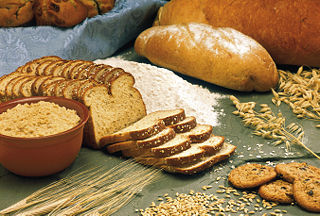
Jewish prayer is the prayer recitation that forms part of the observance of Rabbinic Judaism. These prayers, often with instructions and commentary, are found in the Siddur, the traditional Jewish prayer book.

A siddur is a Jewish prayer book containing a set order of daily prayers. The word siddur comes from the Hebrew root ס־ד־ר, meaning 'order.'

Rabbinic literature, in its broadest sense, is the entire spectrum of rabbinic writings throughout Jewish history. However, the term often refers specifically to literature from the Talmudic era, as opposed to medieval and modern rabbinic writing, and thus corresponds with the Hebrew term Sifrut Chazal. This more specific sense of "Rabbinic literature"—referring to the Talmudim, Midrash, and related writings, but hardly ever to later texts—is how the term is generally intended when used in contemporary academic writing. The terms mefareshim and parshanim (commentaries/commentators) almost always refer to later, post-Talmudic writers of rabbinic glosses on Biblical and Talmudic texts.
Aleinu or Aleinu leshabei'ach, meaning "it is upon us" or "it is our obligation or duty" to "praise God," is a Jewish prayer found in the siddur, the classical Jewish prayerbook. It is recited in most communities at the end of each of the three daily Jewish services and in the middle of the Rosh Hashanah mussaf. It is also recited in many communities following Kiddush levana and after a circumcision is performed. It is second only to the Kaddish as the most frequently recited prayer in current synagogue liturgy.

Saʻadiah ben Yosef Gaon was a prominent rabbi, gaon, Jewish philosopher, and exegete who was active in the Abbasid Caliphate.

Sephardic law and customs are the practice of Judaism by the Sephardim, the descendants of the historic Jewish community of the Iberian Peninsula. Some definitions of "Sephardic" inaccurately include Mizrahi Jews, many of whom follow the same traditions of worship but have different ethno-cultural traditions. Sephardi Rite is not a denomination or movement like Orthodox, Reform, and other Ashkenazi Rite worship traditions. Sephardim thus comprise a community with distinct cultural, juridical and philosophical traditions.
Jules Harlow is a Conservative Jewish rabbi and liturgist; son of Henry and Lena Lipman Harlow. He was born in Sioux City, Iowa.

Amram Gaon was a gaon, head of the Jewish Talmud Academy of Sura during the 9th century.
In Judaism, Nusach, plural nuschaot or Modern Hebrew nusachim, refers to the exact text of a prayer service; sometimes the English word "rite" is used to refer to the same thing. Texts used by different communities include Nosach Teiman, Nusach Ashkenaz, Nusach Sefard, Nusach Edot Hamizrach, and Nusach Ari. In English, the word nusach means formulate, wording.

Birkat Hamazon, known in English as the Grace After Meals, is a set of Hebrew blessings that Jewish law prescribes following a meal that includes at least a kezayit (olive-sized) piece of bread. It is a understood as a mitzvah based on Deuteronomy 8:10.
Solomon ben Jeroham, in Arabic Sulaym ibn Ruhaym, was a Karaite exegete and controversialist who flourished at Jerusalem between 940 and 960. He was considered one of the greatest authorities among the Karaites, by whom he is called "the Wise" ("HaHakham"), and who mention him after Benjamin Nahawendi in their prayers for their dead great teachers. His principal work, one of several treatises entitled Milhamoth Adonai, was an attack on Saadia Gaon.

David Hanoch Yitzchak Bar-Hayim is an Israeli Orthodox rabbi who heads the Shilo Institute, a Jerusalem-based rabbinical court and institute of Jewish education dedicated to the Torah of Israel.

Musta'arabi Jews were the Arabic-speaking Jews, largely Mizrahi Jews and Maghrebi Jews, who lived in the Middle East and North Africa prior to the arrival and integration of Ladino-speaking Sephardi Jews of the Iberian Peninsula, following their expulsion from Spain in 1492. Following their expulsion, Sephardi Jewish exiles moved into the Middle East and North Africa, and settled among the Musta'arabi.

Al HaNissim alternatively V'al HaNissim is an addition to the Amidah and Birkat Hamazon on Hanukkah and Purim. On both holidays, it starts off with a short paragraph, beginning with the words for which it is named. After that, each holiday has a unique paragraph, describing the events for which that day is celebrated.
The following outline is provided as an overview of and topical guide to Judaism:

The Palestinian minhag or Palestinian liturgy, as opposed to the Babylonian minhag, refers to the minhag of medieval Palestinian Jewry in relation to the traditional order and form of the prayers.
The Baladi-rite Prayer is the oldest known prayer-rite used by Yemenite Jews, transcribed in a prayer book tiklāl in Yemenite Jewish parlance.

Avraham Al-Naddaf (1866–1940), the son of Ḥayim b. Salem Al-Naddaf, was a Yemenite rabbi and scholar who immigrated to Ottoman Palestine in 1891, eventually becoming one of the members of the Yemenite rabbinical court (Beit-Din) established in Jerusalem in 1908, and active in public affairs. His maternal grandfather was Rabbi Yiḥya Badiḥi (1803–1887), the renowned sage and author of the Questions & Responsa, Ḥen Ṭov, and a commentary on the laws of ritual slaughter of livestock, Leḥem Todah, who served as the head of Sanaa's largest seat of learning (yeshiva), held in the synagogue, Bayt Saleḥ, before he was forced to flee from Sana'a in 1846 on account of the tyrant, Abū-Zayid b. Ḥasan al-Miṣrī, who persecuted the Jews under the Imam Al-Mutawakkil Muhammad.











